Paducah EcoVillage – Structures and Function
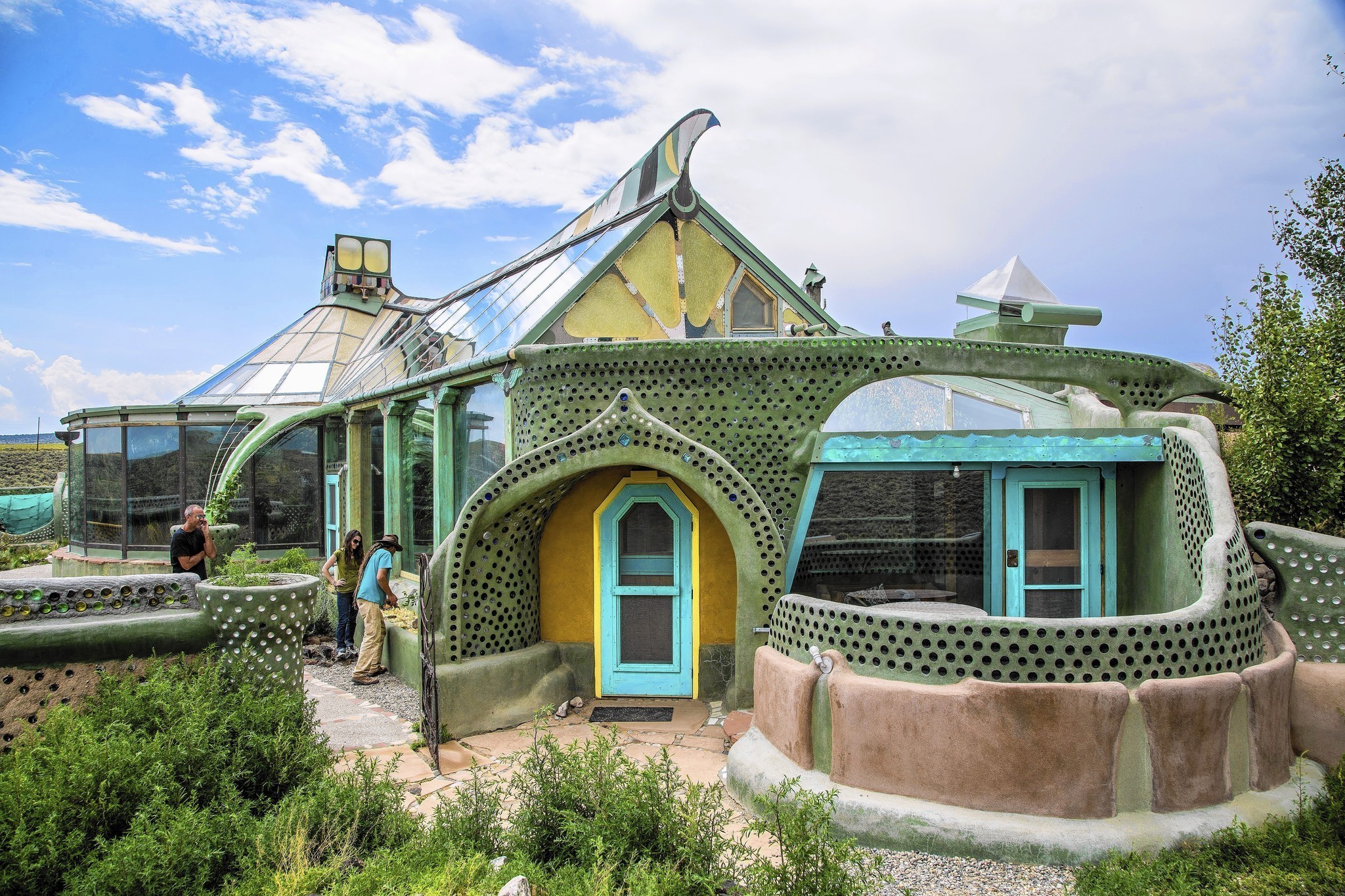
I recently posted about what I want to do in my next phase of living here in Paducah. I want to create a cultural center and within that, build a couple of structures that use green building techniques. See that post here for more on my background and vision. That idea expanded and went on to include a vision of an eco-village I had over 15 years ago. I’ve adapted that to something that could work here in Paducah.
Mission
Paducah’s EcoVillage has several core components that, together, offer an exciting vision for the health and vitality of our City:
- Adding on to our established position as a Creative City. We are classified with UNESCO as such, have the Quilt Museum, LowerTown, Paducah School of Art and Design, theaters, performance venues, musicians, artists and much more.
- Committing to becoming a Green City. This is already a movement across the United States with large metropolitan areas like Chicago, Detroit and other centers incorporating green design into the life of its residents.
- Creating a tourist destination that would bring in new guests who might choose to stay longer and spend more in our local businesses.
- Education: The opportunities for educating our children, designers, the construction industry, and residents are endless.
- Income Generation: By becoming experts in green design and use, we can service our local area and export our knowledge to other cities who want to replicate what we do.
- Community building: The EcoVillage presents an invaluable opportunity to bring people together of all income levels and cultural backgrounds and can dip into this body of knowledge for expertise and sweat equity.
Thus:
Paducah’s EcoVillage celebrates the opportunity to treasure our resources, exploring new ways to incorporate our waste and natural eco-systems into a sustainable model for building, trading and educating.
Site
The site depends a great deal on ownership. The EcoVillage could evolve from a private developer, from local partnerships or it could be owned by the City. If it were a private enterprise, 12th Street has caught my eye as a great possibility. It is rather a wasteland between two neighborhoods the City has highlighted for development, LowerTown (an art neighborhood) and MidTown.
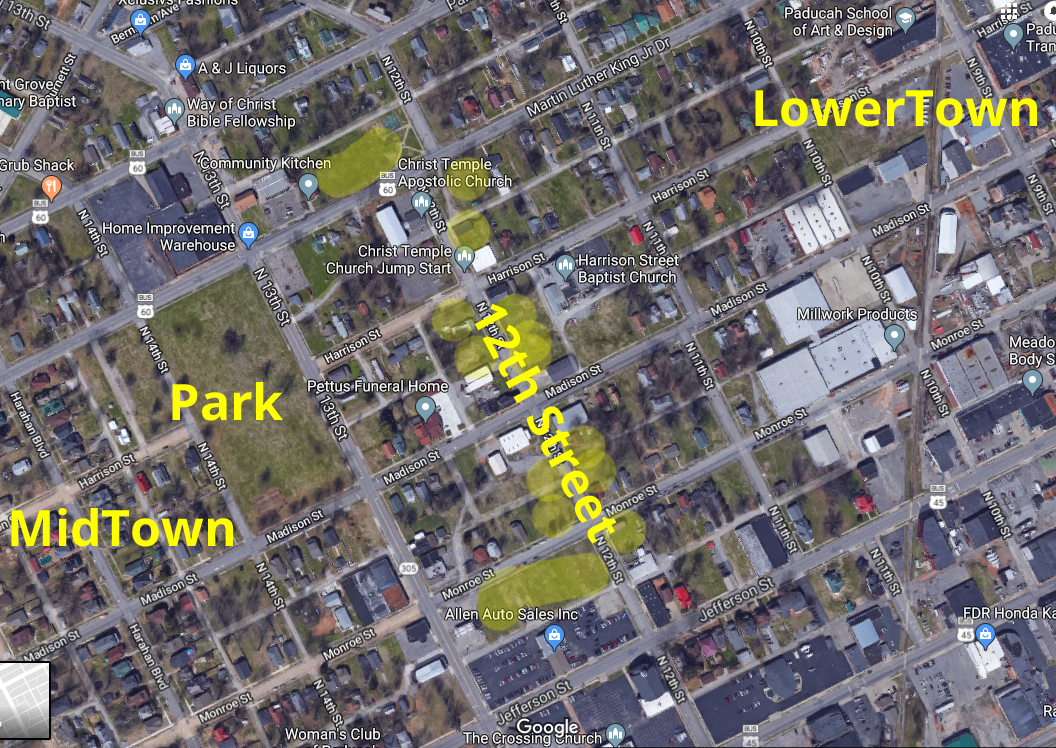
The highlighted areas show empty lots and empty buildings that could be used for the EcoVillage. There is quite a large lot and building on the other side of Martin Luther King Jr Drive (a super busy street that connects the Downtown to two major entrances to Paducah from the highway) which could be used as an eye-catcher to drive people on to 12th Street. The City is also working on the Park, not yet updated on this Google map, which can provide a nice walking and exercising area for the EcoVillage users.
Here’s a plan for the Fountain Avenue Health Park. Phase 1 has been completed:
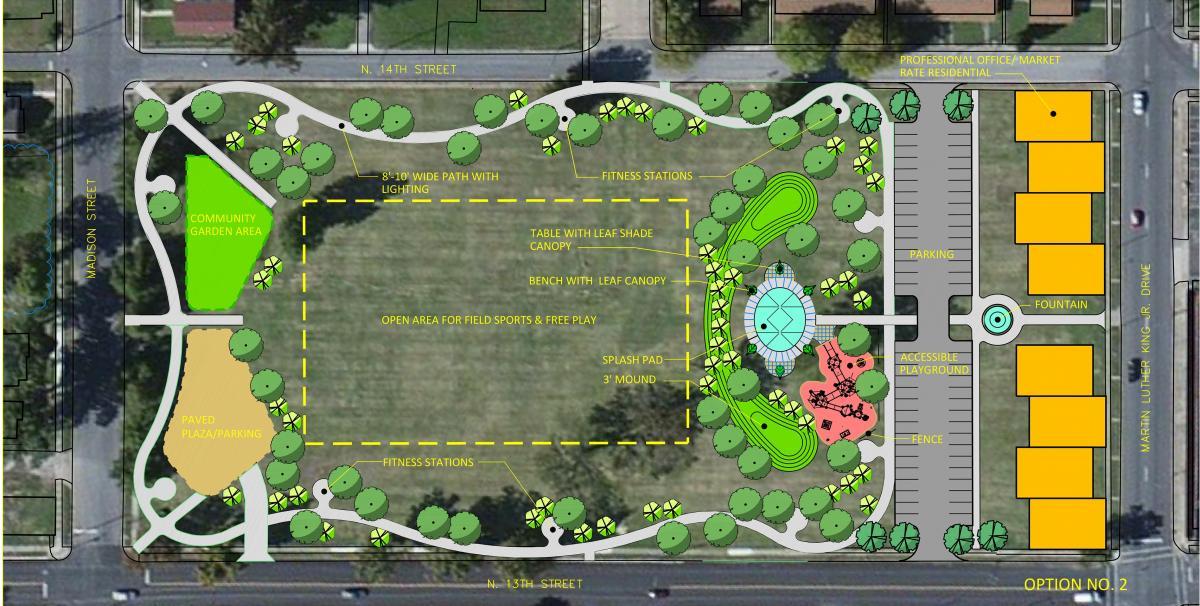
The downside of this site is that there is already some grumbling and resentment about development in this area and it may not be the best solution in terms of reach for Citywide participation. If the City owned the EcoVillage, an ideal spot (in my mind) is Noble Park.
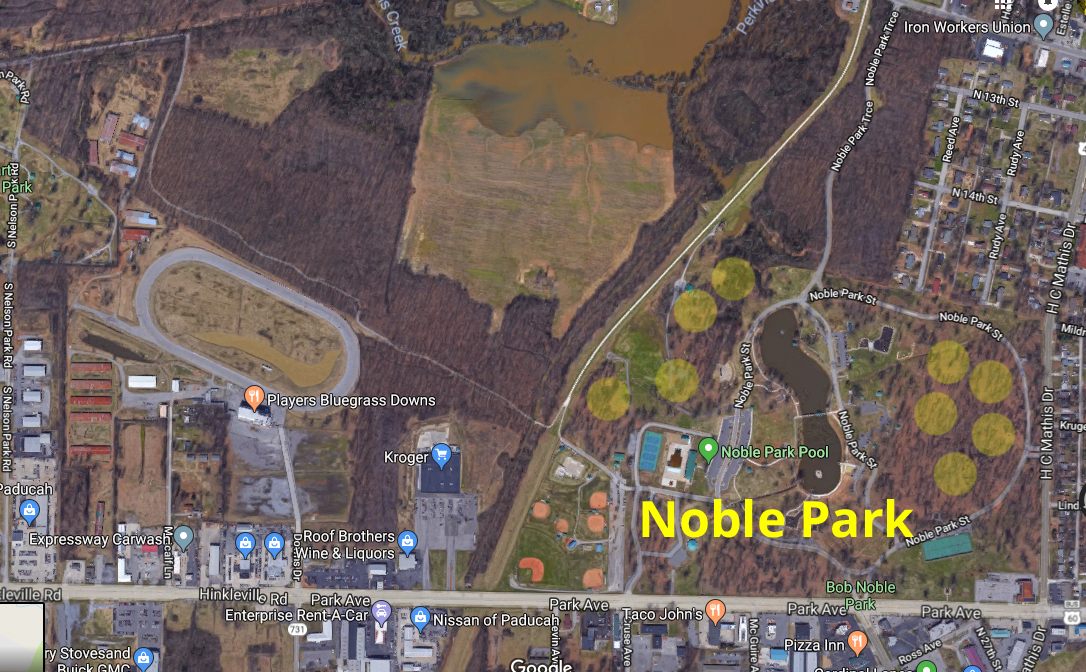
Noble Park already has the infrastructure to accommodate visitors with its parking spots, basketball and tennis courts, picnic areas, trails, swimming pool, baseball field, skateboarding area, and much more. It has over 100 acres with most of it undeveloped. The yellow spots are areas that I think would be ideal for the EcoVillage structures.
There are many other areas in Paducah that would work for the EcoVillage, but the important things to consider are accessibility, access to green areas, easy shopping, and so on. Noble Park is right next door to Kroger Supermarket and Roof Brothers Wine and Liquors, two big assets in my book!
Structures
This is fascinating part for me. The structures are the attraction, the magnet that draws people in both in the construction phase and in the use when finished. There are many tested models to choose from out there as green building has been going strong in the US since the 1970’s and of course, we can look back on millennia of inspiration when we look at traditional structures around the world. For those of us who have traveled, local architecture (good and bad) creates an indelible imprint on our experience of that place. The good ones make us want to go back and the bad ones will keep us away forever. Modern building techniques in the US have destroyed the sense of place, wiping away cultural landmarks and replacing them with manufactured boxes, downright boring and the same everywhere.
My first serious inspiration came from this book by Shelter Publications. First published in 1973, it is loaded with images of amazing structures that boggle the mind. I love the handmade feel, of understanding that it really takes a village to build something like each structure represented and that by participating in the construction, all people involved develop a sense of ownership and benefit from its use.
For our purposes, the structures should consist of both public and private areas. We have flooding to consider, our intense heat and humidity in the summers, and materials that can last well in our environment. Two or more storied structures would allow for public use at ground level and private spaces for guests at the top.
Some structures could be inspired by cultural influences which we could tweak to serve our needs, while others could be completely wild new designs that we come up with. We could even have Citywide competitions where people could submit prototypes of their favorite ideas. This would be a great project for our schools!
Images are clickable over to links with more info on the structure.
Some of my favorites:
That roof is a jaw dropper and the ground level is open for community events. Newer construction has replaced the thrashed roofs with metal.
These are like log cabins, which people here would identify with, but instead of laying logs lengthwise, the wood is cut in lengths and stacked with the ends creating a design. This technique was widespread in Poland in centuries past…
Yurts
Yurts are still widely used in Mongolia and other Northern, nomadic cultures. Like a tee pee, they collapse and can be moved when migrating. Our humid environment would not work for yurts as they are made of wool and would get soggy. Yet, the structure itself could be studied and we could look at waterproofing the wool or replacing it with a waste product like plastic bags. At any rate, the shape and story would be worth investigating. Commercial version for all climates have been adapted and are available here in the US.
The Ndebele have both round and square structures, covered with thatch and decorated in bold, vibrant colors.
Courtyards
I love courtyards! The Spanish and Portuguese took courtyards to South America, long after the Moors left their mark on Europe. Courtyards are found all over Europe, Asia, Africa and South America. Surprising environments may greet you as you walk from the street into a secret world of wonder. They also offer a buffer from the outside world, muffling sounds or confining noise from performances.
I could find endless examples of structures that amaze me and that would work for our EcoVillage. But, I think these are enough to give an idea of all of the design potential that could go into this, from very rustic to highly decorated and contained ideas. In my Green Roof post I had several videos under “Inspiration” that show hobbit houses, straw bale construction, and other structures being built from garbage and available materials. One of the commentators (local to Paducah) talked about an idea that she has about building a tiny house village. There has been great interest in them in the last few years, but buying one costs a great deal. Building them from recycled materials opens up a whole range of possibilities.
This video shows one more. SunRay Kelley reminds me of old timers here in Kentucky. Who would take the time to listen to him? He is slow and seems to be in Lala Land, yet his imagination, skill and knowledge incorporate basic principles that make a structure viable, both in terms of interest and function.
Materials
The core values behind green building have to do with creating sustainable structures from available materials at a low cost. At their best, they offer the potential of getting off the grid and being completely self-sufficient, divesting from high utility costs and returning value to nature by using materials that have a zero carbon footprint. We have a wealth of materials to pick from here in Kentucky: fallen or culled wood, mud, sludge, clay and all of the trash generated by our consumer society: tires, corn cobs, plastic and glass bottles, salvaged metal and so much more.
Michael Reynolds coined the term “Earthship Bioculture” and I consider him to be the guru of green architecture, also capturing the spirit behind it. He uses whatever is waste or available for wherever he is and has traveled around the world and addressed critical needs in communities who have suffered great damage from natural disasters. Have a listen and a look:
So, to me, it doesn’t really matter what these structures look like. I think that the wilder and more interesting they are in design, the more interest they will have as a tourist attraction, thus bringing in more money for our local economy. What really matters is how they are built, with community involvement and by using our waste and renewable resources. Let’s look at a few of them:
Wood
We have loads of wood around here and we can cull or use fallen trees for supports and beams. The strongest wood is that which retains the natural shape in which it was grown: curvy and uneven. When we cut it into planks, we invite stress from the weak points.
Clay
Paducah has natural clay deposits and used to have a commercial pottery industry that manufactured home decor items and tile. Old Hickory Clay continues to operate 20 mines in Kentucky with its headquarters in Mayfield. We have ceramic artists in Paducah and a ceramic program at the Paducah School of Art and Design. The deposits could be explored as sources for handmade tile and decorative architectural items.
Sod and Thatch
We can grow any kind of grasses or reeds here needed for roofing or basket types of construction.
Agricultural Waste
Corn cobs, stalks, and especially straw bales are easily available.
Garbage
This is my pet peeve. I think it’s criminal that we have allowed planned obsolescence to take over our industries. American manufacturers can no longer lay claim to pride in workmanship and design as even the most expensive appliances are built with failure as an intended goal. We expect consumers to trade in their cars every two years while the Japanese build theirs to last at least 200,000 miles. This creates vast cemeteries of waste. Have you heard of the Story of Stuff?
Paducah finally has a city run recycling program that starts this month. Yay! BUT, it doesn’t accept glass, among other things. Apparently, it is cheaper to make new bottles than to re-use them. There are all kinds of uses for bottles in green structures. Imagine where all of these discarded products are going…
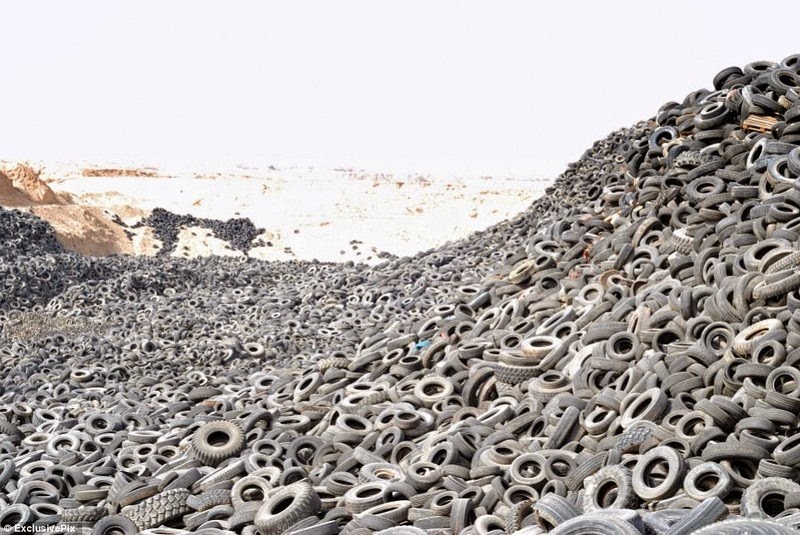
Tire graveyard, Kuwait
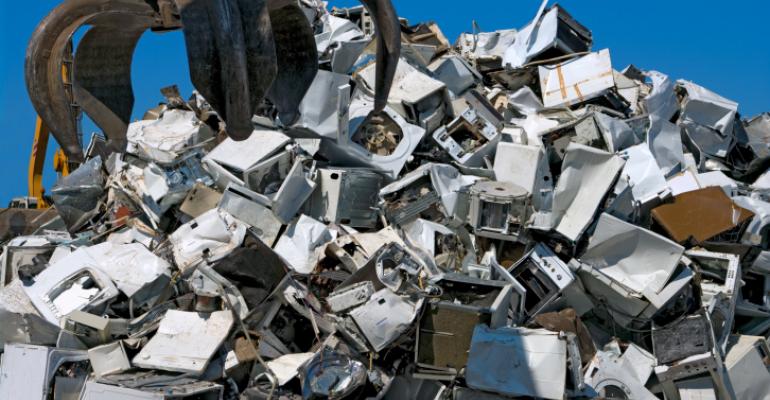
The goal is to keep these materials from going to the dump and using them for construction. The structures should be a challenge and show craftsmanship, excellence, and an appreciation for design.
Function
The EcoVillage needs to address two concerns in terms of space: guest lodging and community spaces for income generation and education. The designs should therefore take this into account and think about privacy, noise, pet friendliness (a huge boost in terms of attracting families traveling with their dogs), and accessibility to outdoor activities. A site like 12th street would limit spaces to a linear layout where a Noble Park type setting could be more spread out.
Another goal with the structures would be to get “off the grid” as much as possible. Building thick walls creates insulation, noise reduction and helps stabilize temperatures. Incorporating skylights and solar panels and other green tech would decrease running costs and increase profit potential.
Outdoor Spaces
The outside spaces are as important as the indoor ones in creating impressions. Some ideas include planting fruit bearing trees available to anyone when in season, having a healing herb garden and a dye garden with workshops on how to use them, creating a meditation area with symbols of our world religions, having outdoor sculptures (both permanent and ones for sale), honoring peacemakers from around the world with artwork dedicated to them, and so on. Visitors should be able to walk outside and find surprising areas of interest.
Community
The EcoVillage is an opportunity to bring people together who rarely rub shoulders on a daily basis. Grannies, architects, builders, school children, teachers, immigrants, Kentucky natives. We have a high population of people who have served overseas and who have seen interesting structures. How about using their experiences in the narrative? All kinds of competitions, workshops, vending opportunities, and educational opportunities can come out of this.
My vision at this point sees classes at West Kentucky Community and Technical College with the Paducah School of Art and Design driving the research, design and implementation of the work. This, with partnerships and cooperation from local expertise from the private sector, contributing to an overall and workable plan. The initial suggestions could come from the community which would also be called on to participate in the labor intensive times of building. There is nothing like working side by side to build something to cement relationships that last beyond the experience.
It might be good to start with something small…. 🙂
Income Generation/Industry
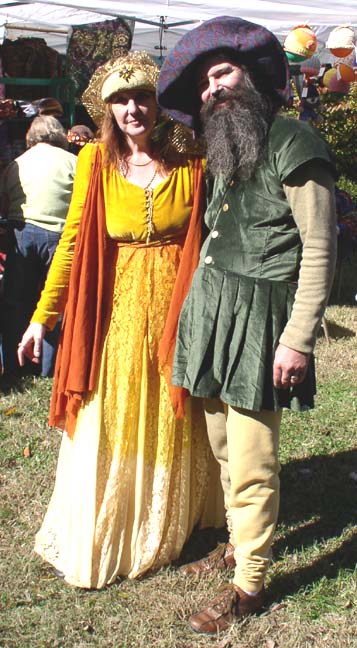
Charlotte and Ike Erwin, Paducah artists.
When I first moved to Paducah, one of the local churches held a Renaissance Festival. It was so much fun! People came dressed in costumes, artisans demonstrated weaving, lace-making, and other skills, vendors sold their wares and their was music, laughter and a great atmosphere. Charlotte and Ike, at the left, are Paducah artists living in LowerTown. Charlotte marbles fabric and Ike is a bookbinder and musician. I believe the church held two events and then stopped… New pastor, I think.
People love to dress up, to pitch their wares, and to congregate in creative ways. The EcoVillage could house all kinds of artistic industries, food vending, workshops and performances.
The structures could house a residency program as well as paying guests. As travel overseas has become more insecure, expensive and just a pain, people are looking for interesting things to do locally. Paducah is a major crossroads and could attract people from around the world for extended periods if there is enough to keep them entertained and interested.
More importantly, the EcoVillage serves as an experiment that hopefully would spill out into the community and truly green the city. What if we had living roofs? The expertise that would grow from involvement with the EcoVillage could spur all kinds of innovations and attract people who want to invest in places where there is a commitment to green living. It could help drive down utility costs and alleviate poverty. The possibilities are endless!
Utopian Dream?
Yeah…. I am a liberal with my head in the skies, but why not? I’ve lived here for twelve years and I know that people here would take a great interest in this and would support it. I work with fair trade groups around the world who are effecting change in their communities with very few resources. One of them is the Barefoot College in India. They have a craft program that creates home textiles, marketed through Tilonia, but among their other income generating programs, they also train illiterate grandmothers from villages around the world on how to install and maintain solar panels. They become solar engineers in six months and go back to their villages and light them up. I have talked to many friends here who looked into installing solar panels and it was out of their reach. My sister, in New Jersey, has them on her house through a State initiative. My mother’s church now buys energy from a solar farm in Wisconsin. My uncle got on the Wind tech bandwagon early on and powered towns and campuses around the Dakotas, making a good living at that. There is no reason why we cannot also benefit through whatever green technology works best in our environment.
I believe in choosing a life of abundance. It involves shifting our world view a bit, but the rewards are tremendous. Check out this TED talk by Bunker Roy, who founded the Barefoot College. He went against the grain in India and has witnessed an amazing shift of both quality of life and confidence with the people he works with:
This is the heart of what a successful experiment would bring to our community. We can also empower our grandmothers, bring in the wisdom of the old timers, the enthusiasm of youth and make a change.
At this time, my plan is to build the Green Roof Culture House as I outlined previously, but I also hope that the City of Paducah will embrace the EcoVillage concept and expand this idea of generosity, experimentation, hospitality, creativity, and sustainability.
Is this something that would interest you? Perhaps it can be replicated where you are. Please leave a comment with your insight as the more we have a dialog, the better we can understand the potential for both successes and resistance. It is not easy to change, yet if we take a step through an open door, who knows where it might lead?
Share this post with your people, spread it around so that we can get a wide range of responses.
Financial support
Any project takes time and money. Your support will help me move forward quickly as I identify how the Green Roof Culture House will be financed and what a team will look like. If it starts out with a house or building, I expect to apply for a loan and that will take several months to process. Meanwhile, I need to keep things running, pay bills and hiring an assistant would be a great help.
Become a monthly supporter for $10/month.
This is an automatic monthly payment through PayPal.
One time donation in any amount:
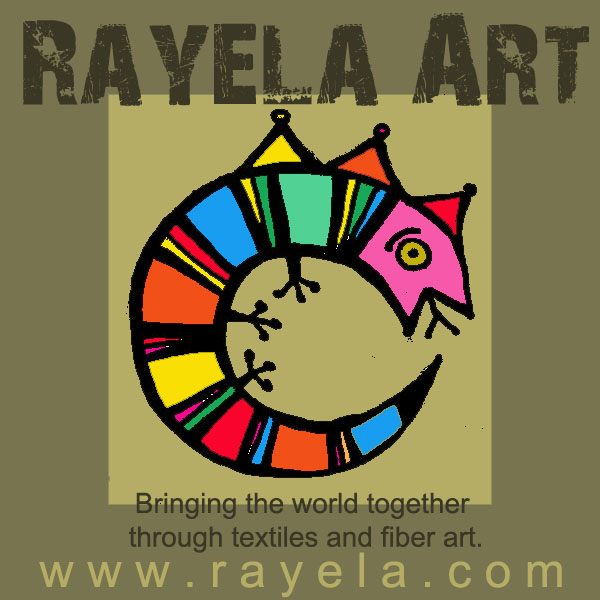
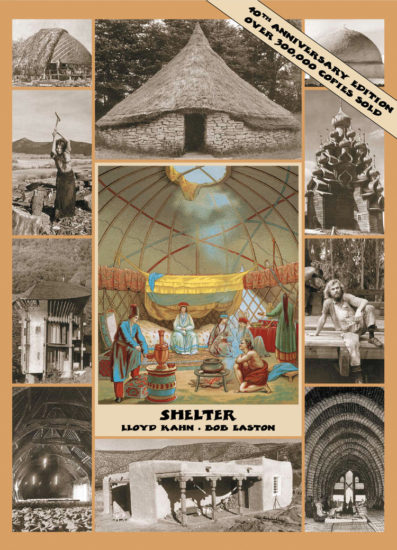
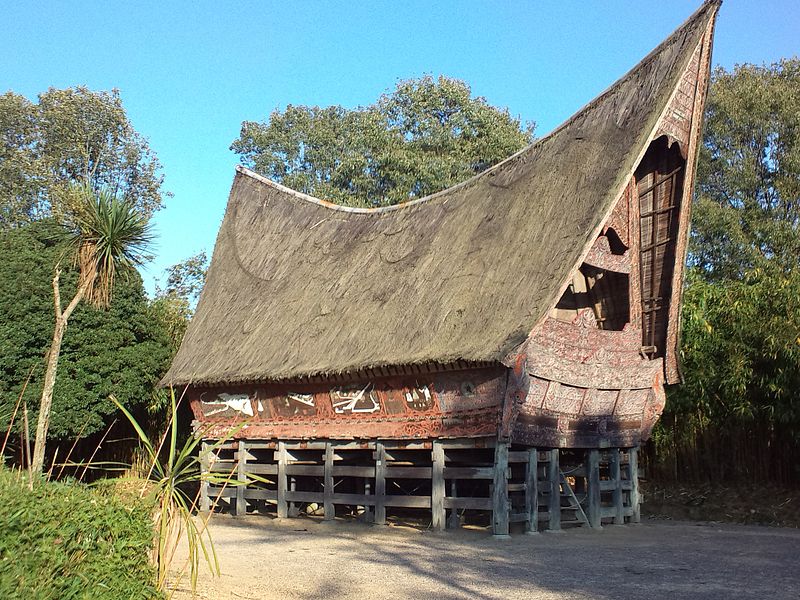
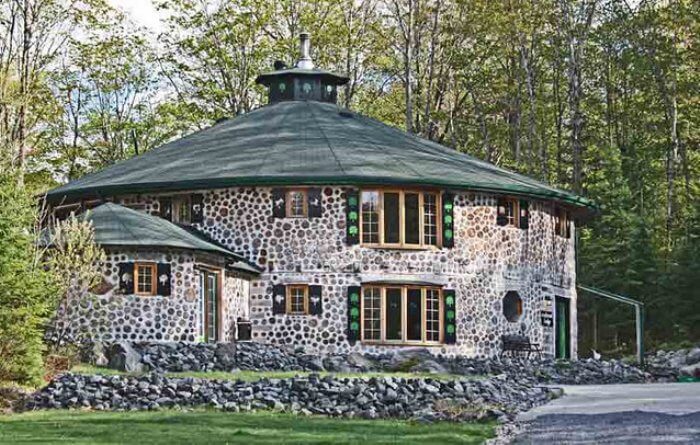
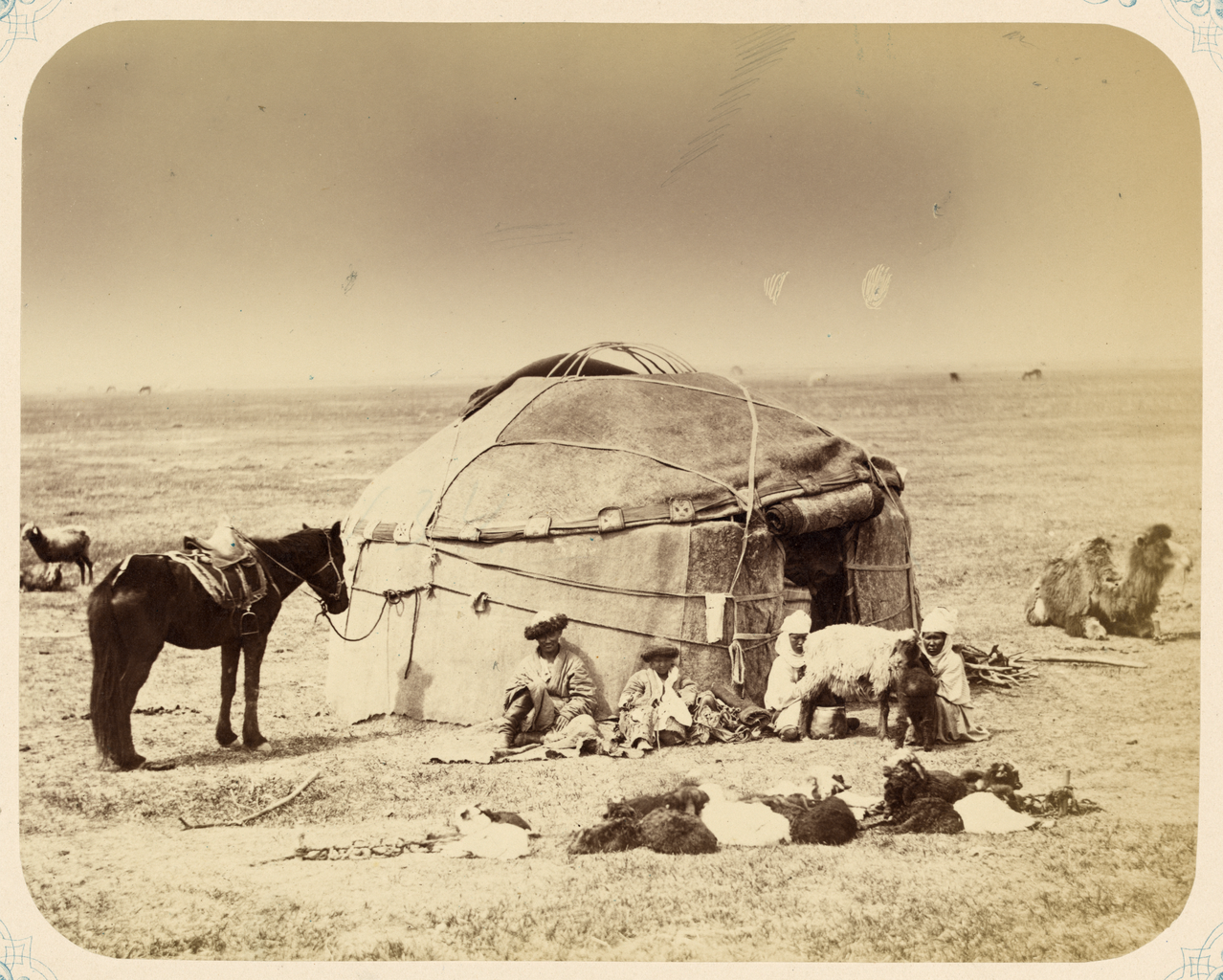
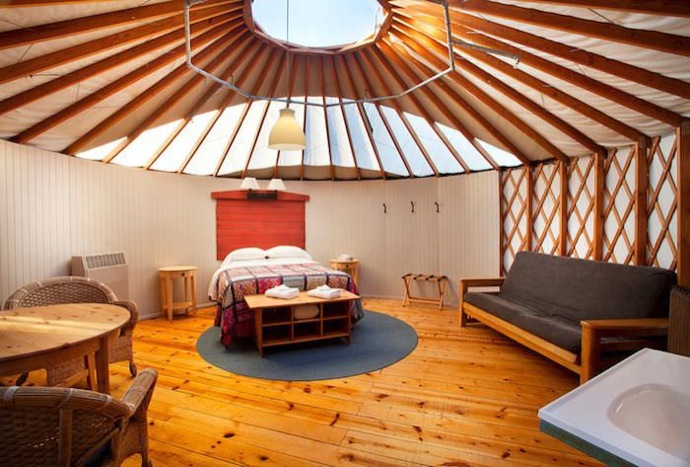
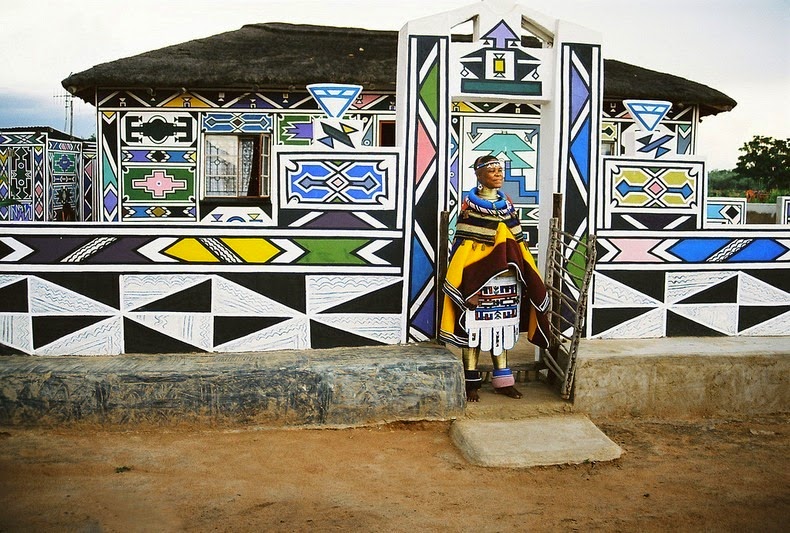
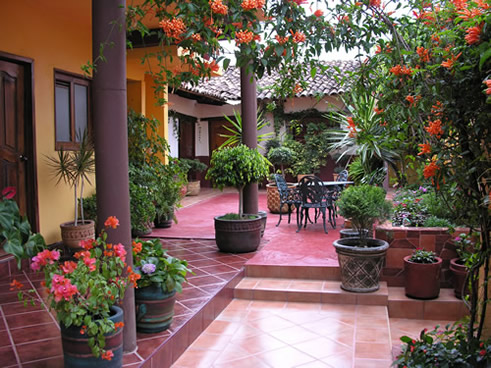
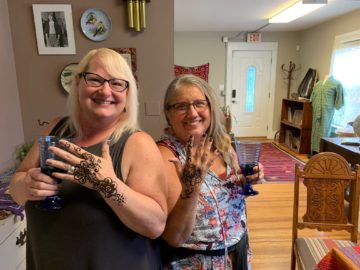
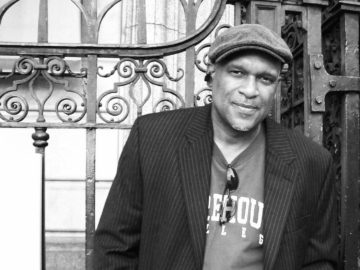
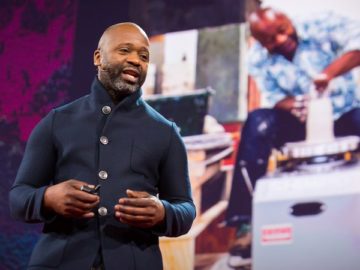
I love this idea so much. When my husband and I have time away from kids, we often settle into lower town for the beautiful, unique accommodations, superb food, lively atmosphere, and lovely outdoor spaces.
This sounds great! If it were able to function as an environmental education center, I’d be very interested in being involved.
Yes, Karen! My hope is that this would spur a shift in our thinking about our resources, waste and how we live. The potential for community involvement is huge and I would hope that the schools and library and other institutions would support it and help shape how it develops.
I love it! High vibe living building ~ feels like being more connected to our surroundings through natural artistic architecture.
I love this idea. There is a house in lower town that meets the green specs. The couple had it on tour a few years ago. Do you know them? I believe he is an engineer. The idea of it having roots in the local college is the best. It would be great to have a lot donated and the college build it; sell it start again.
Yes, I met them years ago. I didn’t realize they were still around.
Interesting idea of building to sell. I think that could happen down the road as a side industry, but I would really like to see something that benefits the community through public use (events, workshops, etc.) and to serve tourism where people could stay in them for short periods.
THIS is a remarkable idea for our city. There is not a single negative to the dreams of our future. It would bring all our innovations and initiatives to completion. Tiny home communities are my passion!
Thank you, CD! Brainstorming with you has helped me clarify some of my ideas. 🙂 I especially admire the bridge you are with our African American community and your connection with the kids, both as a teacher and as a friend. People like you will bring the life force to an idea.
You are a remarkable woman… we can do this! Thank you for the accolade!
Hi Rachel, it’s Laura from http://www.earthship.es what a great idea and fabulous structures. As an addition to our Earthship we also built a geodesic dome. The main structure is made of wood, this is lined with bamboo and covered with padobe and papercrete. The triangular structure making a dome creates a magical space. We,ve also seen them made from bamboo and left open or covered with canvas, a bit like a yurt, gorgeous 🙂
How fun! It’s going to be so interesting to explore your site! Thank you for sharing. 🙂
Sounds like a perfect project in Paducah! Go for it!
Thanks, Mitch! I need to meet with you and Shand and pick your brains at some point… 🙂
Brilliant Ideas flowing in Paducah! Thanks to all the creative minds and progressive individuals that make up this unique city
There really is so much going on! It’s exciting. I look forward to meeting you, Chuck!